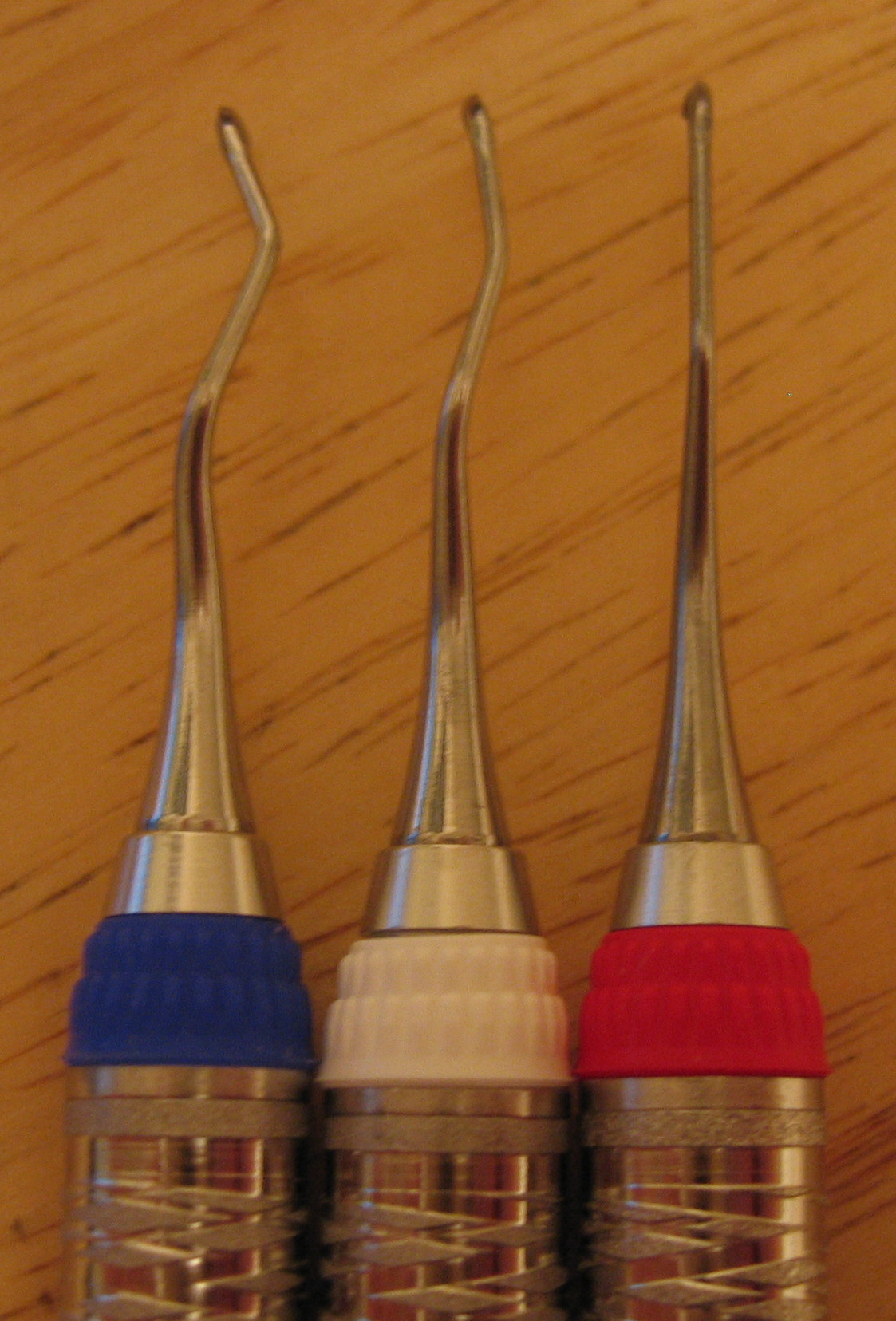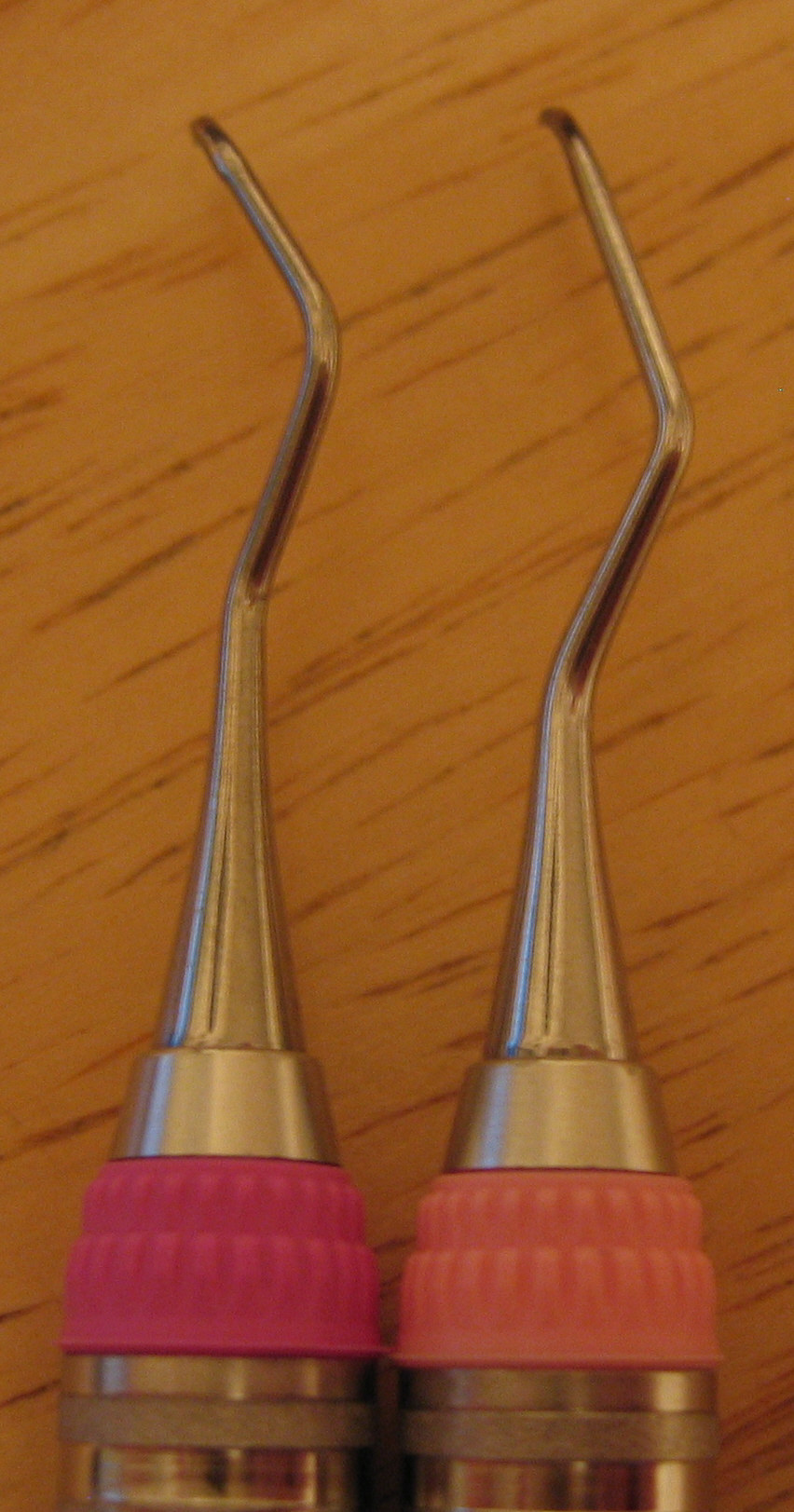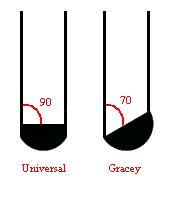Periodontal curette
Editor-In-Chief: C. Michael Gibson, M.S., M.D. [1]
Overview


Periodontal curettes are dental instruments used primarily in the prophylactic and periodontal care of human teeth. The working tips come in a variety of shapes and sizes, but they are rounded at the tip, so as to make subgingival cleansing less traumatic to the gingiva. Scalers possess a sharp tip to access supragingival calculus in tight embrasure spaces, thus making the curette the choice instrument for subgingival areas of calculus accumulation.
Curettes are best used when the terminal shank, namely, the last portion of the handle attached to the blade, is held parallel to the long axis of the tooth. To facilitate proper usage, instruments often come with posterior analogs which possess angled terminal shanks.

Classically, there are two recognized groups of curettes.
- Universal curettes have blades that are situated perpendicular to their terminal shanks, and are thus able to cut against the tooth on both sides of their blades. It is because of this position of the blades in relation to their shanks that allow the blades to be used against both the mesial and distal surfaces of teeth, thus earning them the name 'universal'. Because they were developed at the Columbia University College of Dental Medicine, they are also commonly referred to as Columbia curettes.
- Gracey curettes have blades that are laterally offset by only 70 degrees in relation to the shank. As a result of this, they have a lower cutting edge and an upper non-cutting edge. Because only one of the sides of each blade can cut, Gracey curettes are site-specific, and a posterior instrument used to clean mesial surfaces of teeth won't work on distal surfaces, and vice versa. Gracey blades used for mesial surfaces of anterior teeth from the facial are only suitable for the distal surfaces of the same teeth when access is performed from the lingual.